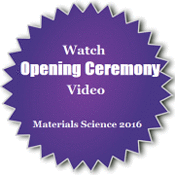
Samuel Frimpong
Missouri University of Science and Technology, USA
Title: Tire rubber material characterization for effective structural and fatigue modeling and analysis
Biography
Biography: Samuel Frimpong
Abstract
Rubber, in its natural state, has the consistency of a heavy viscous fluid with little to no use in structural applications. However, when vulcanized with sulfur, particulate fillers, silica and other strength inducing ingredients, cross-links are formed and the highly amorphous state of the rubber is transformed into an elastic solid. Thus, vulcanized rubber, in the absence of cords, is a nanocomposite. While added fillers give rubber enhanced performance characteristics (stiffness and toughness properties), their presence influence the dynamic and damping behavior of rubber in a very complex and disproportionate fashion. Numerical modeling of rubber behavior for predictive analysis remains a formidable challenge amidst successes achieved thus far. The object of this paper is to implement existing rubber material constitutive models in characterizing tensile strength and fatigue test data of rubber specimens extracted from an off-road mining truck tire. Specifically, the paper highlights modeling strategies for rubber strain softening, nonlinear viscoelasticity, strain-induced crystallization, and fatigue crack growth rate using spreadsheets, and commercially available material calibration codes. The novelty of the study lies in the calibration approach adopted for the fatigue characterization of the experimental data. An example problem to show how the characterized materials are used in a finite element analysis of a model tire is provided. The results obtained indicate enhanced durability in strain-crystallizing elastomers

